One of the greatest All-India Andhra Litterateurs is from the new state of Telangana. A man whose name is so synonymous with scholarship and literary criticism he has become a veritable figure of speech, Mallinatha is one of our Greatest Telugu Personalities.
Background
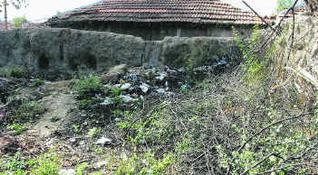
Born in the village of Kolacelama, near Pattancheruvu in Medak District, Mallinatha Suri came from an illustrious family of Pandits. His grandfather was honoured with a kanaka abisheka by none other than the famous Kakatiya King Prataparudra. While specific dates have been difficult to certify, he is generally thought to have lived between 1350 and 1450 C.E.
He himself had a son named Kapardin or Kumarasvamin, who had a son named Mallinatha as well. Another son was named Peddi Bhatta. Kumarasvamin wrote a commentary on the Prataparudriya called the Ratnapana. Narayana Pandita, who wrote a well-known commentary on the Campu Ramayana, was the ninth in Mallinatha’s lineage. [2]
Mallinatha himself adorned the Court of the Vijayanagara Emperor Deva Raya II, who deputed him in 1430 to resolve a dispute in the Vaisya community between them and the Vyaparins of Kanchi. This work, which explicates the genealogy of the community, uses both Telugu and Sanskrit prose. [2,91].His son Kumarasvamin later was a fixture in the court of Devaraya II’s son, Mallikarjuna.
Despite being born into an illustrious family dedicated to the Yajur Veda, young Mallinatha is reputed to have not been a good student. In fact, local legend states that his educational inclination did not develop until he did seva to an itinerant sadhu, who initiated him. Mallinatha then traveled with him to Varanasi, eventually becoming the scholar we know him to have been today.
One of the most prolific writers in Classical Indic Literature, Mallinatha Suri was an accomplished commentator and original writer as well. While the celebrated Sanskrit Poet, Mahakavi Kalidasa is known to us primary through Mallinatha’s commentaries, he also inspired our Telugu Personality’s own creative works, most famously, his magnum opus: Raghu veera carita,
The Raghu veera carita is a work in 17 cantos (sargas) and organized into groups of verses called kulakas. The ninth canto is composed in a manner similar to Kalidasa’s Raghuvamsa, thereby honouring it. In a manner befitting the master of metaphor himself, Mallinatha deploys upama and rupaka to a great extent.
Kalidasa has often attributed human feelings to the natural phenomenon. He has developed deep into the nature and the human nature and has discovered emotional connections with them. Mallinatha has described nature in human terms in this epic. [2, 103]
The dominant rasa is naturally veera (the heroic), though there are a number of subsidiary one’s like bibatsa. Appropriately for a man of the south, as Acarya Dandin would extol,”Mallinatha’s diction and imagery never dege[n]erate into pomp. Like Kalidasa, he has used compounds which are neither too long nor heavy, following the Vaidarbhi style…simple and direct.“. [2,103] What’s more, per the Kavyadarsa, Mallinatha demonstrated the importance and result of mastery of grammar (vyakarana).
Achievements
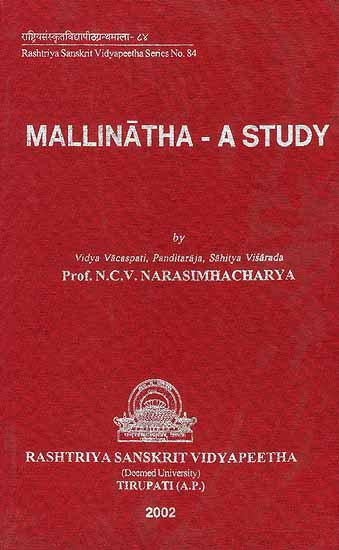
In the world of Saastriya (Classical) literature, Mallinatha’s achievement needs no introduction. The breadth and depth of his study and commentary is a matter of wonder even today:
- He was the only Telugu poet to write commentaries (Teekas) on all 5 Mahakavyas [1]
- A Teekakaara (commentator of literature) extraordinaire, Mallinatha Suri is the earliest of nine total in our tradition. [2]
- He was a great scholar of the various Astika philosophical schools (Darsanas)
- A polymath, he as a master of Sastra, and learned in Vyakarana, Mimamsa and Nyaya
- Wrote a commentary on the logic treatise Taarkikaraka, where he refuted rival schools and reasserted Aksapada Gautama’s position in the school of Nyaya.
- He even added to the list of logical fallacies per Nyaya darsana.
- A commentator on political science, frequently cited Kamandaka’s Nitisara
- His commentary Tarala had a section on Alankara (Rhetoric and Poetics).
- Mallinatha’s arbitration decision was immortalized in his Vaisyavamsa Sudhakara
- While an Upadhyaya was one who could teach Sastras to students, and a Mahopadhyaya could write books on Sastras, Mahamahopadhyaya was the highest
- He received the title ‘Mahamahopadhyaya’ from Singhabhupala of Rachakonda.
- Composed a number of Subhasitas (maxims) to provide insight and wisdom
- Translated numerous Sanskrit Kavyas in to Telugu [1]
Legacy
Mallinatha’s mastery over the Sanskrit language and literature is undisputed. With innumerable quotation[s] he has enriched his commentaries with them–His commentaries exude a fresh fragrance of many Sanskrit flowers [2,117]
From critiquing Kalidasa’s Raghuvamsa to writing his own Raghu Veera Carita, Mallinatha’s legacy is almost beyond hyperbole. It is not for nothing he is called the Vyakhyana Chakravarti. Indeed, it is said that in Maharashtra and some other parts of India, an incisive critic is called a Mallinatha and his criticism is referred to as Mallinathi!
Famous throughout India, this scholar of Sanskrit and Telugu left an indelible stamp on not only how we viewed our own Classical Indic Literature, but on Indic Literature itself. Indeed, he was living proof that the best critics need not be failed creatives. He was a literary success in his own right, and an eminent commentator on Bharatiya Sahitya. Here are a list of his compositions and commentaries:
Creative Works
- Raghuveeracarita-an epic in 17 cantos adapting the Ramayana
- Vaisya vamsa Sudhakara-provides an historical background on the community
- Udaarakavya
- Bhakti rahasya
- Nakshatra Paataadhyoya
Commentaries
Classical Poetry
- Sanjivani-a commentary on the Kumarasambhava
- Raghuvamsa-a commentary on the same
- Meghaduta –a commentary on the same
- Ghantapatha-a commentary on the Kiratarjuniya
- Sarvankasa-a commentary on the Sisupalavadha
- Jivaatu-a commentary on the Naisadhiyacarita
- Sarvapatheena-a commentary on Bhatti Kavya
Sastra Works
- Tarala-a commentary on Vidyadhara’s Ekavali (a work on Alankara-sastra)
- Niskantaka-a commentary on Varadaraja’s Taarkikaraksaaatika (a work on logic)
Philosophical Works
- Siddhanjana-a commentary on Tantra Vartika
- Parimala-a commentary on Svaramanojna Manjari
*[2, 17]
Mallinatha has a knack of judging the situations in a particular context and expressing his views in short, pithy, significant sentences. [2, 114]
Despite the peerless accomplishment of this literary gem of ancient Andhra, his birthplace in modern Telangana is in need of support and maintenance. The Kolachala Mallinatha Suri Sahithi Peetham is in a dilapidated condition, especially after the local Veda Patasala relocated. While belated efforts were made before bifurcation to properly honour him with a memorial and tank bund road statue , his home town remains in disrepair.
All true lovers of Telugu culture, whether from Telangana, Rayalaseema, or Kosta, value the legacy of this Upadhyaya of Upadhyayas, and must see to it that his legacy in the Telugu rashtras and Bharatavarsha is once again restored.
References:
- http://www.thehindu.com/todays-paper/tp-national/tp-andhrapradesh/article3163121.ece
- Lalye, P.G. Makers of Indian Literature: Mallinatha. New Delhi: Sahitya Akademi. 2009
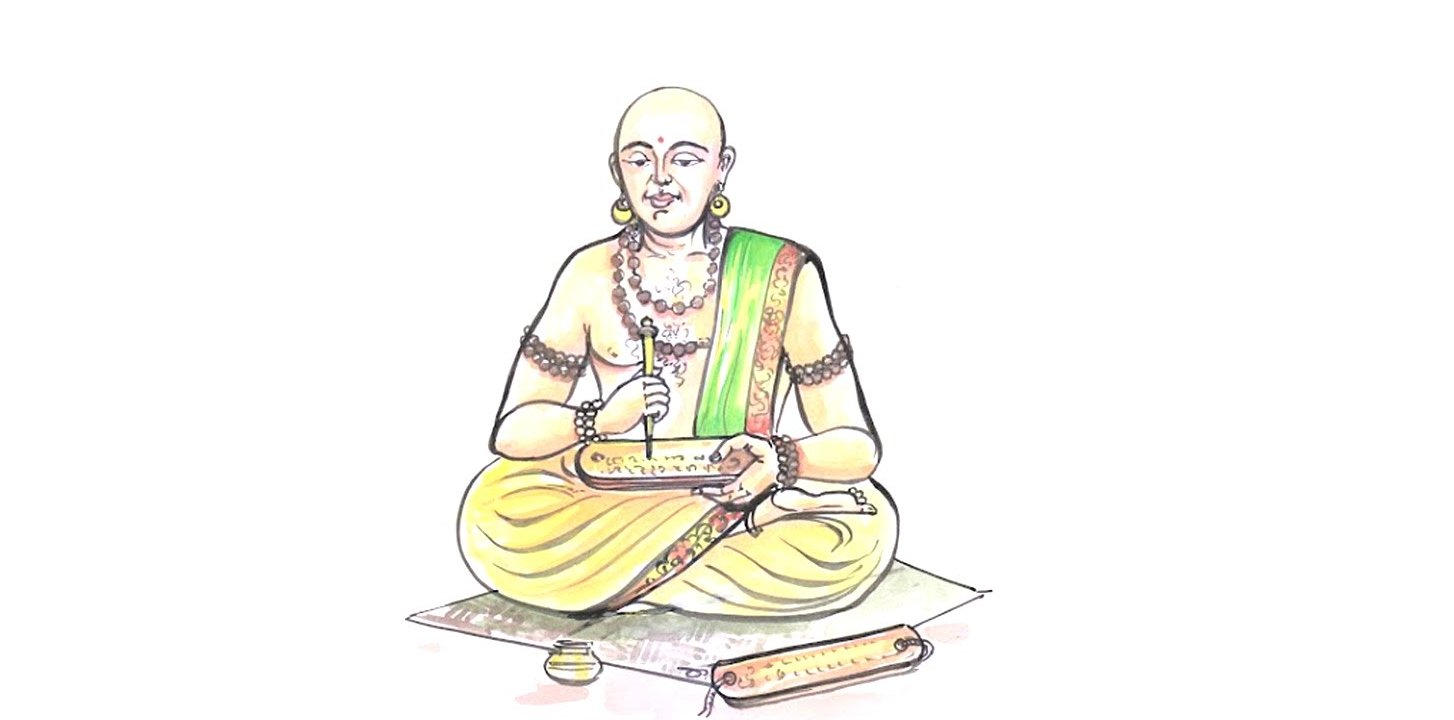

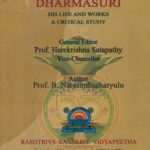

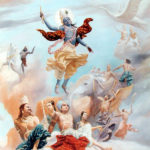



What a chance to read about the great doyen of TElugu and sanskrit literature Shri Shri Mallinatha Suri Garu.
May I request you to send this msg to shri KVMohan who has an address on Gmail.?